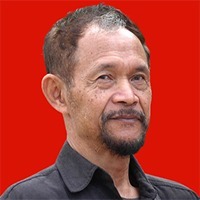Woce
Monday, November 16, 2020
arsip tempo : 171400328940.

A round November 10 I always recall Woce. Full name: Robert Walter Monginsidi. Dutch forces executed him by a firing squad in Pacinang, Makassar, on September 5, 1949.
I wrote about him a few years back:
Someone noted that a few minutes before he was executed, Monginsidi, the guerrilla leader feared by the occupying Dutch army, forgave the firing squad charged with killing him. Perhaps he quoted Luke who recorded Jesus’ words at His cruc
...
Subscribe to continue reading.
We craft news with stories.
 For the benefits of subscribing to Digital Tempo, See More
For the benefits of subscribing to Digital Tempo, See More








